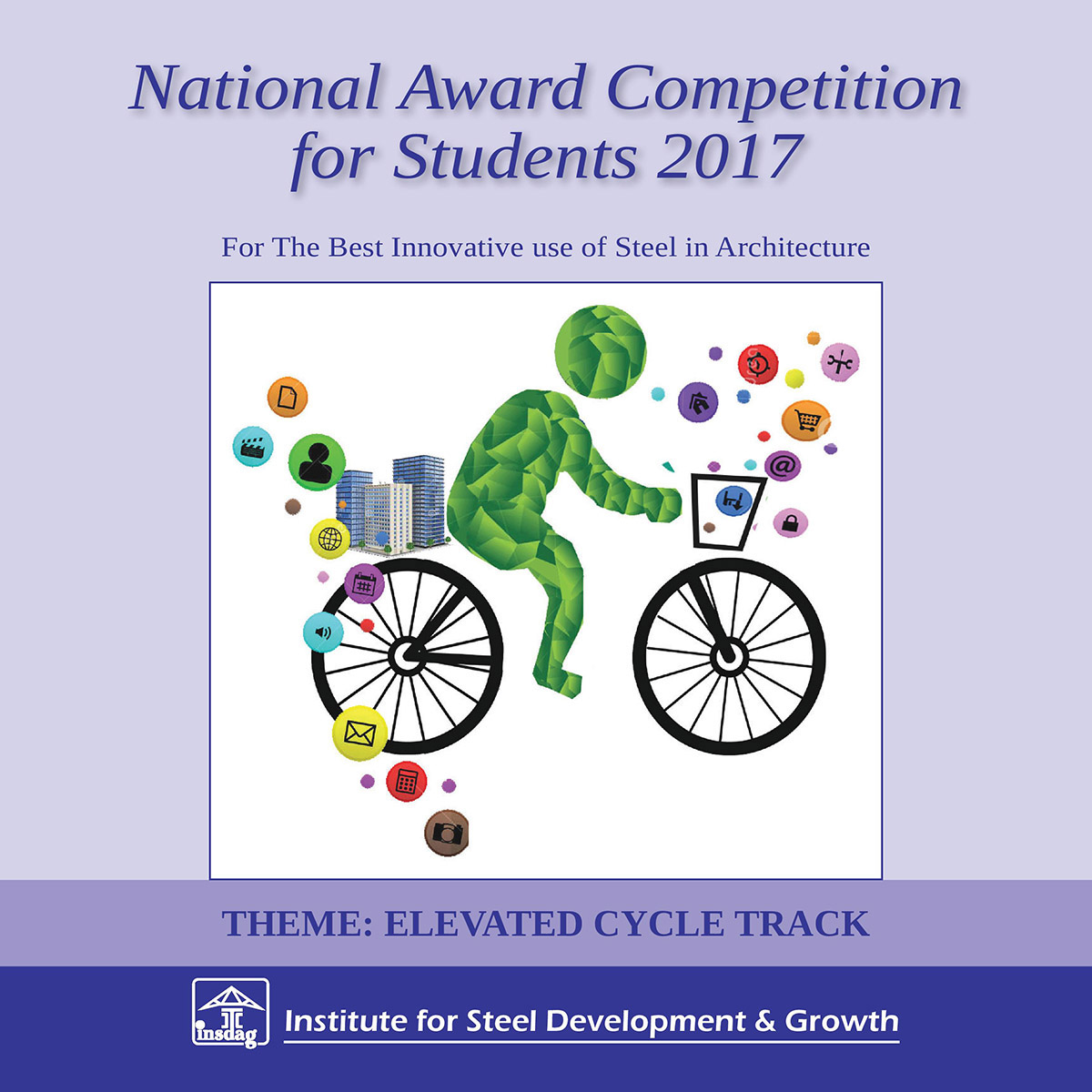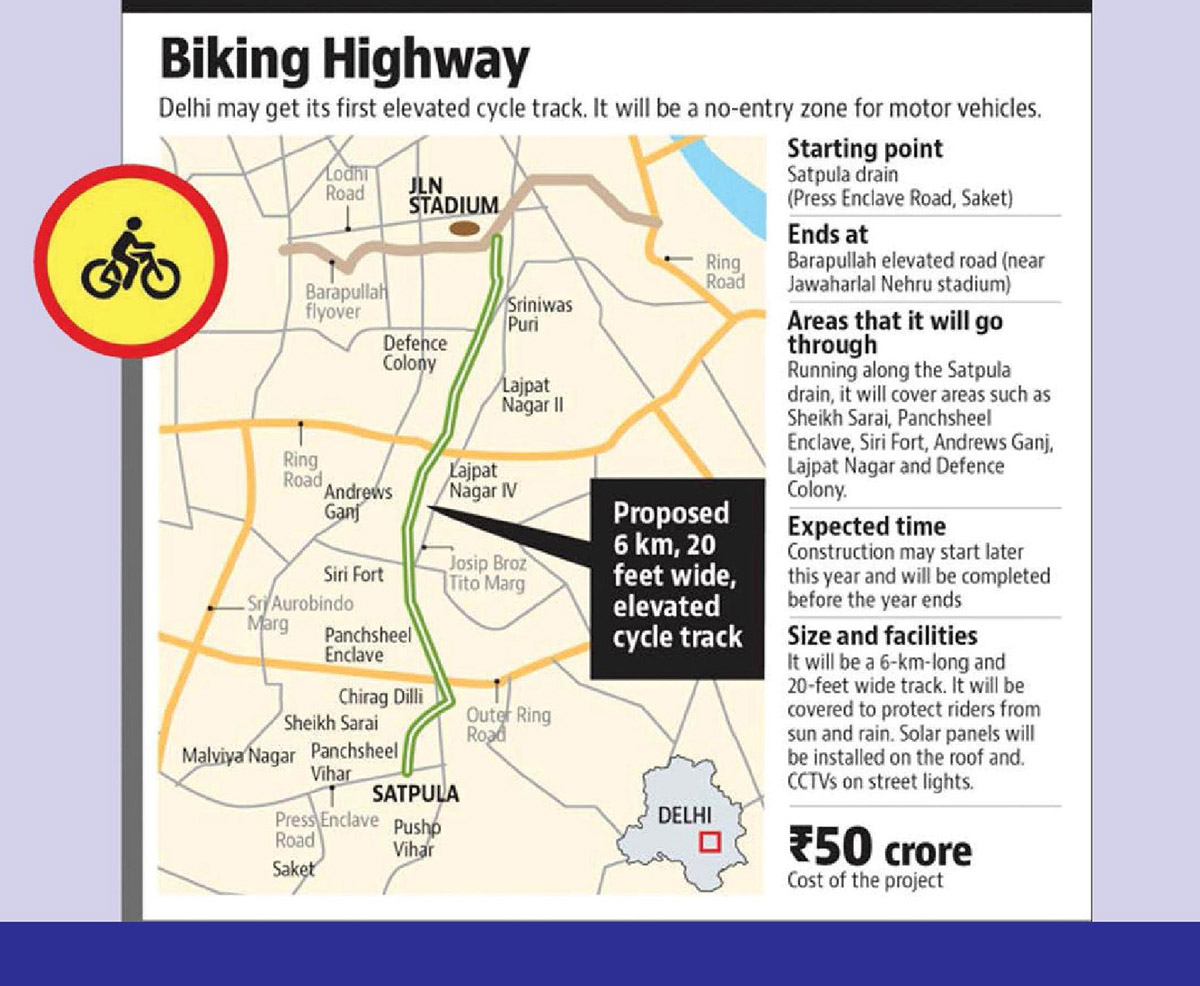Submitted by Pappal Suneja
National Award Competition for Students : Best Innovative Use of Steel in Architecture (2017-18)
India Architecture News - Dec 22, 2017 - 11:55 20560 views

In order to promote the steel-intensive architecture and construction in India, the Institute for Steel Development & Growth (INSDAG) is pursuing various activities and one of them is "National Award Competition for Students: Best Innovative Use of Steel in Architecture". Starting from the year 1999-2000, INSDAG has arranged an interesting array of Competitions every year for the Students of the Architecture pan India with a view of recognizing, appreciating and finally rewarding the young and budding Architects of tomorrow for "Excellence in Steel Architecture".
INSAG organization is a non-profit making member-based organization established at Kolkata by the Ministry of Steel and the major steel producers of India. The Institute primarily works towards the development of steel usage technology and technical marketing by diversifying into applications of steel in new areas; upgrading skills and know-how through refresher courses, workshops, etc.; creating awareness among potential users and highlighting the benefits of steel vis-à-vis other conventional materials.
For the 18th year i.e. for the year 2017, the theme of the competition is “Elevated Cycle Track”. The theme is based on the data of real-life project proposed in capital city New Delhi.

The selection process of the entries for the competition in subject involves two-stage evaluation – firstly at the zonal level (North, South, East and West Zones of India) by the Zonal Committees and the second at National Level by the Central Selection Committee is the final round of competition that shall be held in the last week of February 2018 in Kolkata.
Four Eminent Professors are engaged as Zonal Coordinators from across different zones of the nation.
Ar. (Dr.) Sudhir D Chavan, Principal, Sinhgad Technical Education Society’s Smt. Kashibai Navale College of Architecture, Pune is the Coordinator for the West Zone
Ar. Ritu Verma, Associate Dean, Om Institute of Architecture & Design, Hisar, is the Coordinator for the North Zone
Ar. (Dr.) Gauri N Shiurkar, Principal, McGAN’S Ooty School of Architecture, Ooty is the Coordinator for the South Zone
Ar. Sanghamitra Sarkar, Assistant Prof., Jadavpur University, Kolkata is the Coordinator for the East Zone.
For the Central jury of the final round besides these four Zonal Coordinators, one eminent practicing Architect and Mr. D Datta, AGM (Civil & Structural), INSDAG shall also be a member to select the National Award Winners.
About 350 students from all over India had expressed their interest for participation at the zonal level this year and best 16 entries, 4 from each of North, South, East & West, would be selected for the final selection round to be held in the month of February in the upcoming year.
Themes of the Competitions (From 1999 onwards):
Centre for Performance of Arts at Kolkata;
Sports cum Recreation Centre at Chennai;
International Standard Shopping Plaza at Mumbai;
World-class National Art Gallery at Banjara Hills, Hyderabad;
International Cricket Stadium at Raipur, Chattisgarh;
International Airport Terminal Building at Vishakhapatnam;
World-class Permanent Trade Fair Complex at Kolkata;
World-class Railway Station in Rajasthan;
A 200 bedded Hospital at Burari, Kaushik Enclave, Delhi;
World-Class Vehicle Terminus; Steel intensive village;
Steel intensive Martyr Memorial;
Steel intensive (B+G+4) Storeyed Office Building;
(B+G+8) Storeyed super specialty hospital in Kolkata;
Cultural Complex-cum-Spiritual Centre in any urban center in India;
Steel intensive Highway amenities center;
Tall Building(s)
Elevated Cycle Track
All Images © INSDAG
> via National Award Competition for Students: Best Innovative Use of Steel in Architecture
